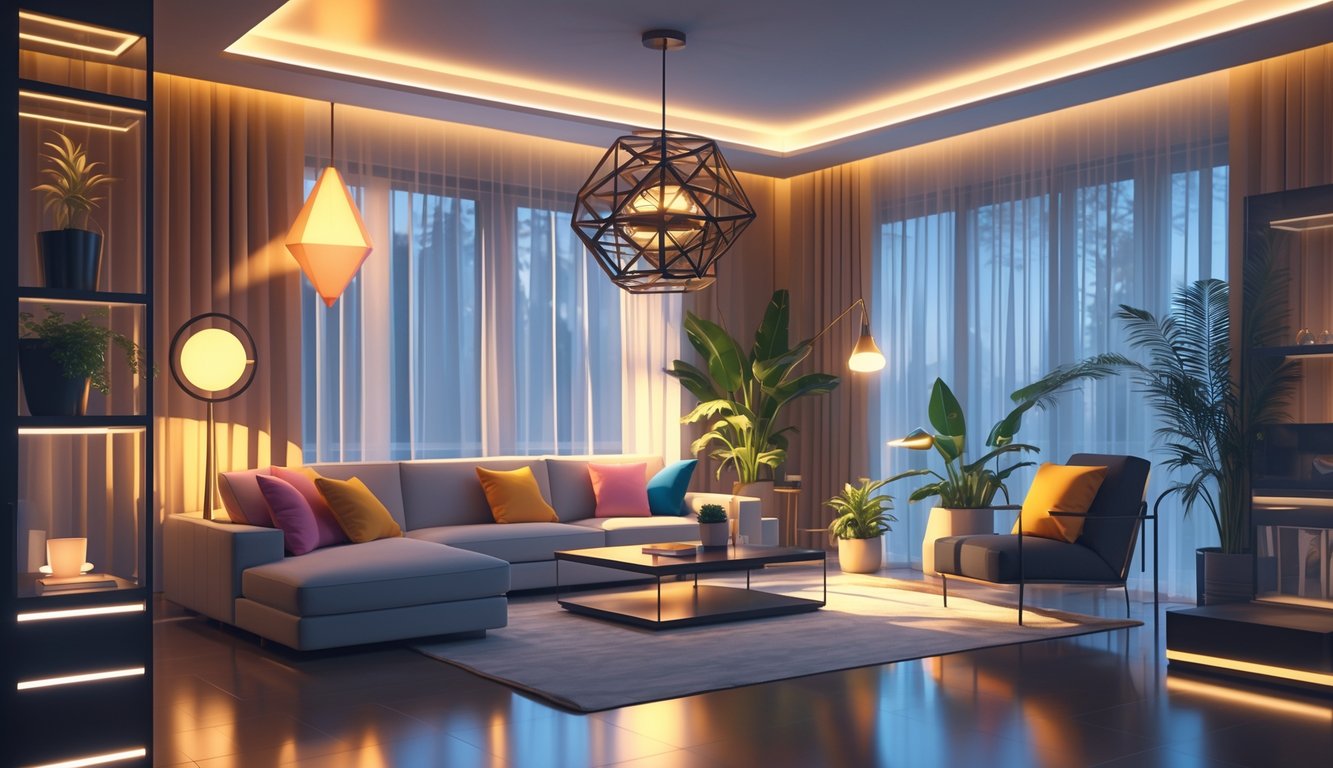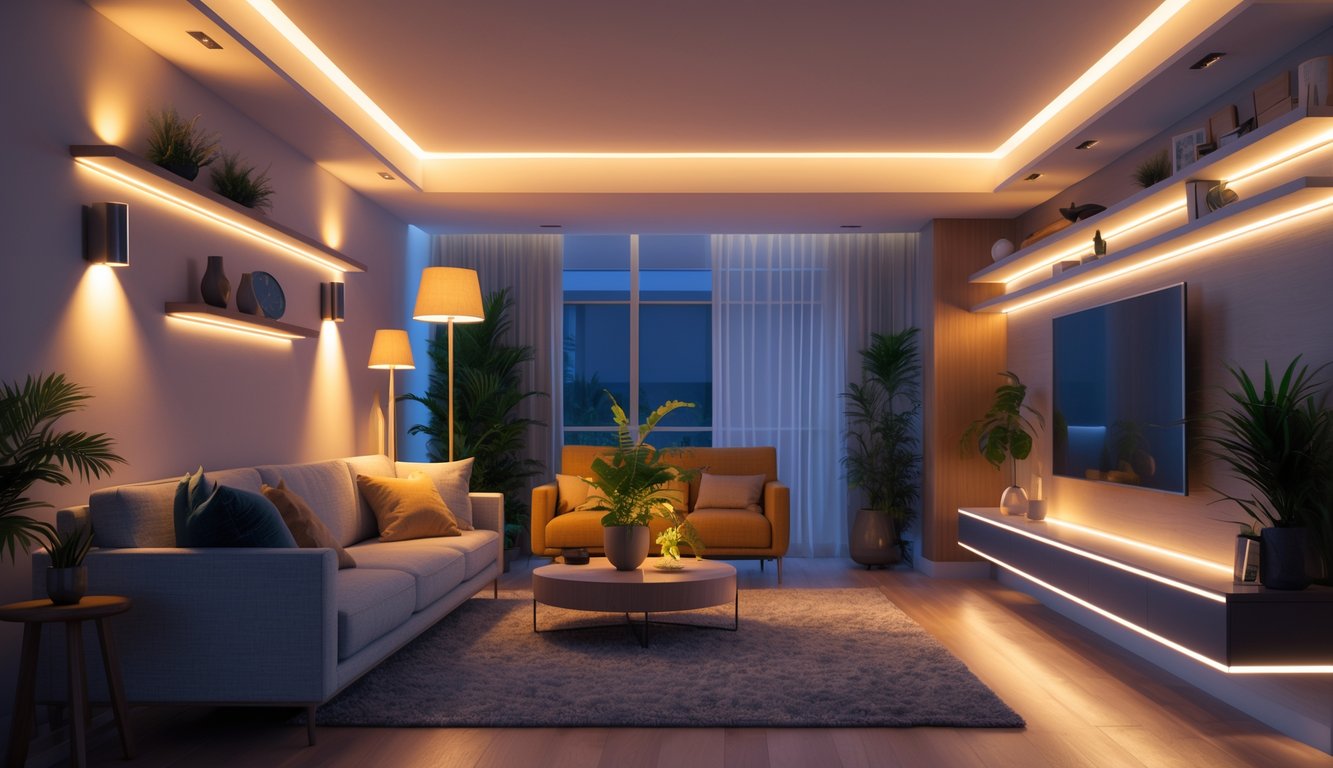
Okay, so here’s the thing nobody tells you: moving a lamp three feet can make your living room look like you finally hired someone who knows what “curated” means. I slapped some LED strips behind my bookshelf (the sticky kind, not the fancy hardwired ones), and my neighbor literally asked if I got a designer. I nearly laughed—nope, just me, some tape, and a half-charged drill. Accent lights? Used to think they were a scam. But then I stuck a couple behind my TV, and now every Netflix binge feels like I’m at a tiny, slightly disappointing theater. Power bill? Didn’t even flinch. Unlike that one time I plugged in three floor lamps and nearly shorted out the apartment. Oops.
You know what’s wild? It’s not about brighter bulbs or blowing your rent money on chandeliers. Some expert at the American Lighting Association (I guess that’s a thing) says picking the right size fixture is what keeps your room from looking like a dentist’s waiting area. I swapped out my builder-grade bulb for a warmer LED—think 2700K, not that blue-white horror—and my wall color went from “meh” to “maybe I don’t hate this apartment.” I found a bunch of sneaky accent lighting tricks at JourneymanHQ’s guide on accent lighting, but honestly, after all that, my room still felt like it needed more. More what? No clue. Ambient glow, spotlights, whatever. Also, why are light switches never where you want them? Or is that just me?
So I’m taping up LEDs, then falling down a Google rabbit hole about chandelier math (add your room’s length and width in feet—why is this even a thing?). Better Homes & Gardens lighting improvement tips tried to explain it, but my brain just checked out. Lighting feels random, honestly. Sometimes it clicks and suddenly people want to actually hang out in your living room. Sometimes you’re just left with a weird shadow lurking by the bookshelf and no one says anything, but they notice.
The Power of Unexpected Lighting Choices
Why does nobody warn you that wall sconces are secretly impossible to place? Like, one inch off, and suddenly your living room looks like an airport runway. I’ve swapped out $40 bulbs for $100 bulbs thinking it’ll fix the “DMV waiting room” vibe, but it’s always the oddball lamp or random fixture that actually changes the mood.
How Unique Fixtures Transform Interiors
I bought this weird sculptural pendant last week—cheap, kinda ugly, but now everyone ignores the stain on my rug and just stares at the ceiling. Not even kidding. People drown rooms in track lighting, but one bold fixture and suddenly the conversation shifts. My electrician literally said, “Never seen anything like this.” I think it was a compliment?
Accent lighting tucked behind crown molding or under shelves? Nobody expects it, but it’s the oldest designer trick. Supposedly, hotels do this to make tiny rooms look huge. I tried installing LED strips behind molding and suddenly my “builder beige” walls looked expensive. Table lamps outside on the patio? I dragged one out, and now my neighbor wants to know where I bought it. Rechargeable, by the way. Check this out. Forget landscaping—just add a lamp.
Psychology of Lighting in Home Design
Dim hallways stress me out more than my neighbor’s drum kit. Apparently, Harvard’s Health Publishing claims bad lighting spikes cortisol. Maybe explains my midnight cheese raids? I read somewhere that blueish bulbs make people uncomfortable at dinner, but warm 2700K ones make everyone chatty. Can’t verify, but it feels true.
People rave about neon signs or wild floor lamps and, yeah, I get it. Lighting messes with color, texture, even how big your space feels. Light paint + good lighting = bigger room—some designer explained it here. But every time I try layering lights, I end up replacing ancient dimmer switches and tripping the breaker. Which one is it again? No clue.
You think you’re buying a new armchair for the vibe, but it’s probably just your sad overhead light ruining everything.
Layered Lighting for Depth and Dimension

Seriously, why does every room get that weird flat look at night? One lonely overhead, and suddenly your $900 sofa looks like it belongs in a dorm. I started stacking lights—ambient, task, accent—and things finally made sense. Sort of. My kitchen’s still a mess.
Blending Ambient, Task, and Accent Lighting
Mixing light types is like DJing, but for your eyeballs. Ambient lighting is the big, boring stuff—ceiling fixtures, flush mounts, those “illuminators” from aisle 12. You need it, or you’ll trip, but it’s never flattering.
Task lighting is personal. Desk lamp for doomscrolling, under-cabinet strip for pretending you can cook. Skip it and you’ll have a sore neck or onions everywhere. My electrician buddy swears layered task lights reduce eye strain by 30%. Did I measure? No. He’s just obsessive.
Accent lighting is pure drama. Spotlights under shelves, LED strips in closets, lights in patio steps—stuff that makes your place look weirdly fancy. I once clipped book lights behind my TV. It worked. Suddenly the clutter disappeared and the room felt deeper.
Creating Focal Points with Layered Techniques
Trying to create a focal point with lighting is like chasing a cat—never goes where you want. One wrong spotlight and all eyes are on your radiator. Layer dimmable accents with spotlights, aim them at your sofa, art, or that thrift store vase nobody else likes. Stack lamps at different heights and your room suddenly has depth, even if it’s tiny.
Pro designers (or maybe just the catalog I stole this from) bounce ambient light off matte walls, then use a skinny task lamp for edges. Sounds weird, but it makes your bookshelf look fancy. “Visual hierarchy,” they call it. I call it “not embarrassing.” Overthinking? Probably. But try watching TV with just overheads. You’ll see.